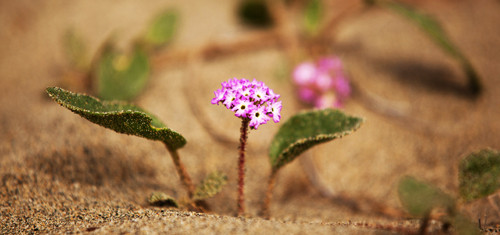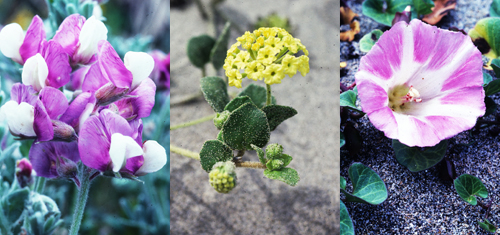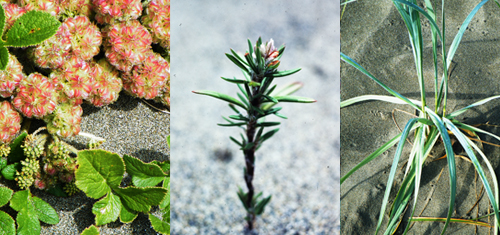Threatened plant species
Pacific Rim National Park Reserve

Pink sand-verbena
Pink sand-verbena (endangered, red-listed) (Abronia umbellata)
The pink sand-verbena was thought to be extinct in Canada due to its shrinking dune habitat. Two plants were discovered in 2000 on the West Coast Trail and thanks to Parks Canada staff, pink sand-verbena is making a comeback. Thus far, thousands of these plants’ offspring have been planted and are beginning to repopulate the dunes. Since the repopulation, other pink sand-verbena plants are appearing around the park, making it a true success story.

(left to right) Grey beach peavine, Yellow sand-verbena, Beach morning glory
Grey beach peavine (red-listed) (Lathyrus littoralis)
Pacific Rim National Park Reserve is home to over 60% of the total population of this very rare plant in Canada.
Yellow sand-verbena (blue-listed) (Abronia latifolia)
The sticky leaves of this plant enable sand to stick to them. Enjoy its sweet smell whenever the flowers are in bloom.
Beach morning glory (blue-listed) (Convolvulus soldanella)
This rare plant belongs to the same family as morning glory—a pesky garden weed.

(left to right) Beach-carrot, Black knotweed, Dune wildrye
Beach-carrot (blue-listed) (Glehnia littoralis)
Crushing the seeds of this plant between your fingers produces the pleasant aroma of a freshly-picked garden carrot.
Black knotweed (blue-listed) (Polygonum paronychia)
This low-lying, shrub-like plant produces dark, woody stems and tiny, spear-shaped leaves.
Dune wildrye (yellow-listed) (Leymus mollis)
In contrast to invasive beachgrasses, this native dune grass grows sparsely and co-exists with other native plants.
- Date modified :